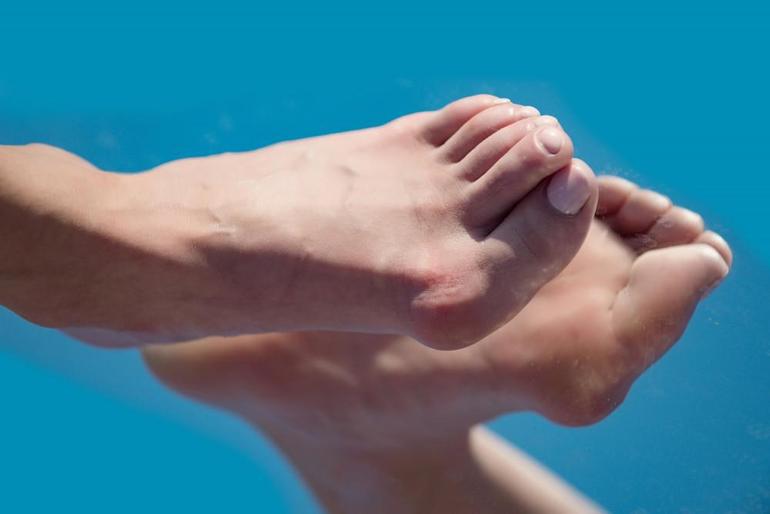The Centers for Advanced Orthopaedics is redefining the way musculoskeletal care is delivered across the region with locations throughout Maryland, DC, Virginia and Pennsylvania.
Bunions, Hammertoes & Crooked Toes Are Serious and Often Need Correction

For some, shoe shopping is a delightful pursuit, for others – those with a bunion, or seriously crooked toe – wearing fashionable shoes becomes a nightmare as toes rub against enclosed shoes. Sufferers are often found wearing flip-flops long after the last glimmer of summer has faded, some even into the dead of winter. The good news is that there are options for treatment.
What Is A Hammertoe or Crooked Toe?
A hammertoe is a toe that is bent because one of the joints is damaged. This abnormal bending puts pressure on the toe when wearing shoes and causes pain.
Early on, hammertoes are flexible and usually, the symptoms can be managed without surgery. But over time and without treatment they stiffen and can worsen. Once a hammertoe starts to develop it never gets better by itself.
Symptoms
People with hammertoes commonly experience:
- Pain or irritation, especially when wearing shoes
- Corns and calluses on the toe, between two toes, or on the ball of the foot
- Inflammation, redness, or a burning feeling
- Visible bend of the toe(s)
- In more severe cases, open sores may form
While a hammertoe is usually easy to spot, an x-ray may be necessary. This helps your doctor determine the severity of the problem and also which treatments are best for you.
Non-surgical Treatments
The treatment your foot and ankle specialist recommends will depend upon the severity of your hammertoe. The following are common non-surgical ways to alleviate pain:
- Non-medicated pads can shield and protect your toes from rubbing and further damage
- Avoid shoes with pointed toes, ones that are too short, or have a high heel
- A custom orthotic device inserted into your shoe may help control any muscle or tendon imbalance
- Corticosteroid injections are sometimes used to ease pain and inflammation. Otherwise, oral drugs, such as ibuprofen, may be recommended to reduce pain and inflammation
- Splints or small straps can realign the bent toe
Is Surgery Needed?
When a hammertoe has become rigid and nothing helps to control pain or if an open sore develops, surgery may be needed.
The procedure your doctor recommends will be based on factors like the extent of deformity, the number of toes involved, your age and your activity level. Depending on the procedure selected, recovery time varies.
If you have foot pain, talk to your foot and ankle specialist.